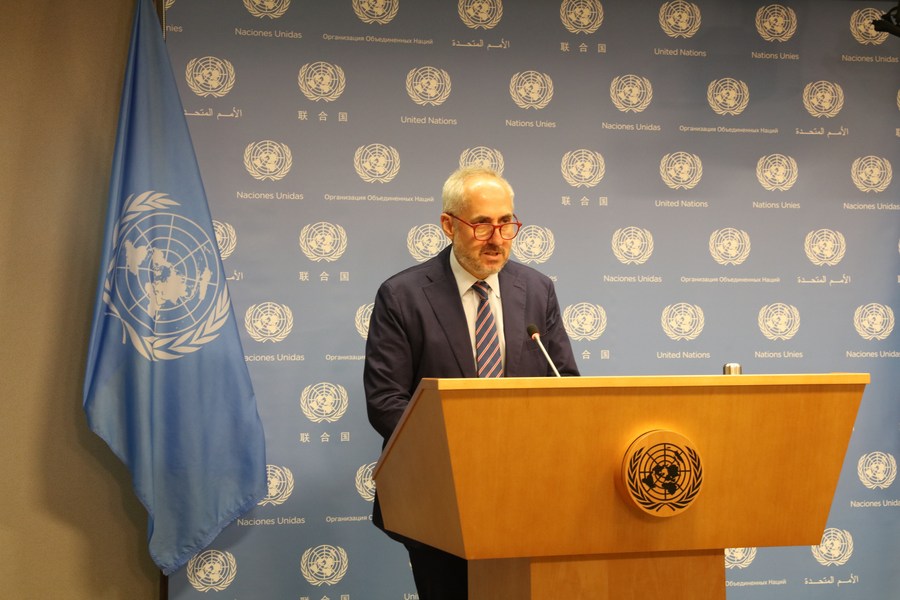
Stephane Dujarric, spokesman for UN Secretary-General Antonio Guterres
UNITED NATIONS, Feb 24 (NNN-Xinhua) — The United Nations and partners are attempting to meet the needs of people on both sides of the contact line in Ukraine despite volatile hostilities and limited funds, a UN spokesman said.
“Our colleagues in (Ukraine) continue to receive reports of hostilities impacting civilians and their properties, as well as infrastructure on both sides of the ‘contact line,'” said Stephane Dujarric, the chief spokesman for UN Secretary-General Antonio Guterres. “Once again, we call on all parties to take all measures to protect civilians and civilian infrastructure.”
He told reporters in a regular briefing, “despite the volatile security situation the United Nations and its humanitarian partners in eastern Ukraine are making all efforts to respond to the needs of people on both sides of that line.”
Guterres earlier said in a speech at a General Assembly session on Ukraine how the global body works in the field during such hostilities. “Our humanitarian operations are independent of whoever might control the territory where people are living.”
He said that since the start of the year, the world organization and its partners delivered 140 metric tons of life-saving aid across the contact line.
“Here again, our actions are based entirely on humanitarian principles endorsed by the General Assembly,” the UN chief said. “United Nations humanitarian assistance is guided by four humanitarian principles: humanity, neutrality, impartiality, and independence.”
Guterres added that the principles are central to establishing and maintaining access to affected people, including those in the context of an armed conflict.
Dujarric said the existing Humanitarian Response Plan for 2022 has been funded by less than 10 percent.
“We are calling on donors to prioritize their support to this plan, which seeks 190 million U.S. dollars to address the needs of 1.8 million of the most vulnerable people on both sides of the ‘contact line,'” the spokesman said, adding that limited funding limits response efforts on both sides.
The contact line separates the breakaway states in the easternmost Donbass region from the rest of Ukraine.
Meanwhile, in KIEV, the Ukrainian Parliament on Wednesday supported a bill to introduce a state of emergency in the country starting Feb 24 amid the ongoing tensions with Russia, according to the parliament’s press service.
The legislation, introducing the state of emergency in all Ukrainian regions except for the conflict-hit Lugansk and Donetsk regions, for 30 days, was supported by 335 lawmakers in the 450-seat parliament.
In the Donetsk and Lugansk regions, where a Joint Forces Operation is underway, a special legal regime has been already in effect.
According to Interfax-Ukraine news agency, the state of emergency in 22 Ukrainian regions envisages a ban on holding mass meetings and protests, on changing the place of residence by those liable for military service, and on the production of information materials that can destabilize the situation in the country.
The new law also stipulates for restriction of freedom of movement, inspections of vehicles, premises and personal belongings of citizens, and the introduction of a curfew if the need arises.
Besides, it provides for the evacuation of residents from places where there is a danger to the lives of people.
Ukraine’s National Security and Defense Council proposed the parliament introduce a state of emergency across the country due to the buildup of Russian troops near the Ukrainian border.
Earlier in the day, the State Border Guard Service (SBGS) of Ukraine imposed special measures in regions bordering Russia, Belarus and those having access to the seas.
The measures include the limitation of movement of private vehicles and floating devices, flights of light planes and unmanned aerial vehicles, as well as restrictions on filming and photographing of certain objects. — NNN-XINHUA
